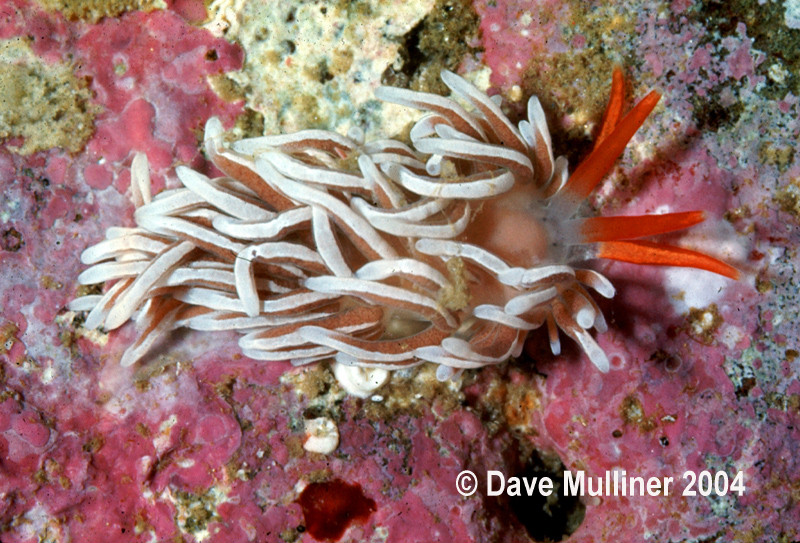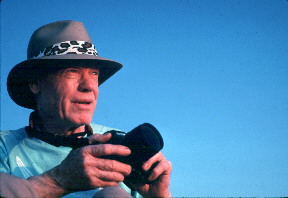 |
Catriona columbiana
Photo courtesy of Dave Mulliner
Catriona columbiana
As the name suggests Catriona columbiana was originally named from British Columbia. It is routinely observed all the way down to San Diego, California, where Dave’s photo here was taken. Specimens in Canada have been confused with Cuthona punicea Millen, 1985 as seen on Bill Rudman's Sea Slug Forum. The major external differences are that C. columbiana is more slender, and always has orange on the rhinophores, but may lack orange on the oral tentacles. The cerata are in simple transverse rows and have a smooth white line on them. The ceratal cores can be orange, reddish or brownish-orange. Cuthona punicea is a much stouter animal and has no orange on the rhinophores and branching rows of cerata. The cerata are dark purple and they have spots of white on the front which sometimes coalesce to form irregular lines. Cuthona punicea is a rarer, deepwater species, and feeds on an undescribed purple hydroid.
The orange color variation of Catriona rickettsi, shown in Behrens (1991) species # 184, may sometimes be confused with C. columbiana as well.
Dave Mulliner’s specimen here is an extreme example with all color patterns expressed it their most dramatic hues. A spectacular specimen indeed. Compare this shot with Cuthona columbiana BOW #340, where the colors on Steve’s specimen are much more subtle.
Miller (2004) argues that Cuthona alpha Baba & Hamatani, 1963, in New Zealand, for which the synonymy with C. columbiana has been accepted by most taxonomists, is a distinct species. In his paper, recommending all species of Cuthona worldwide, except Cuthona nana, the type species of the genus, be placed in the old Genus, Trinchesia, he spins a tale of circular logic, which to me substantiates the synonymy, rather than the separation he recommends. Go figure.
The geographic occurrences for this species range widely from New Zealand and South Africa to Alaska and Japan.
References:
Behrens, David W. 1991. Pacific Coast Nudibranchs, A guide to the opisthobranchs Alaska to Baja California. Sea Challengers. Monterey, CA. 107pp. Second edition.
Behrens, David W. 2004. Pacific Coast Nudibranchs, Supplement II: New Species to the Pacific Coast and New Information on the Oldies. Proc. Calif. Academy Sciences. 55( 2): 11-54.
Millen, S.V. 1986. Northern primitive tergipedid nudibranchs, with a description of a new species from the Canadian Pacific. Canadian Journal of Zoology, 64: 1356-1362.
Miller, M.C. 2004. An appraisal of the identity of the New Zealand species of the aeolid family Tergipedidae (Gastropoda: Opisthobranchia). Journal of Natural History 38:1183-1192.
Danville, Calif
Dec. 2004

Send Dave mail at mulliner1@juno.com |
Taxonomic information courtesy of:

David W. Behrens
Author:
Pacific Coast Nudibranchs
Send Dave mail at dave@seachallengers.com
|
